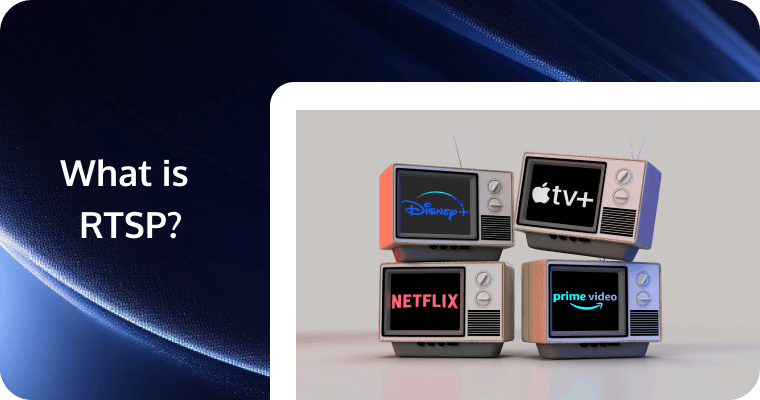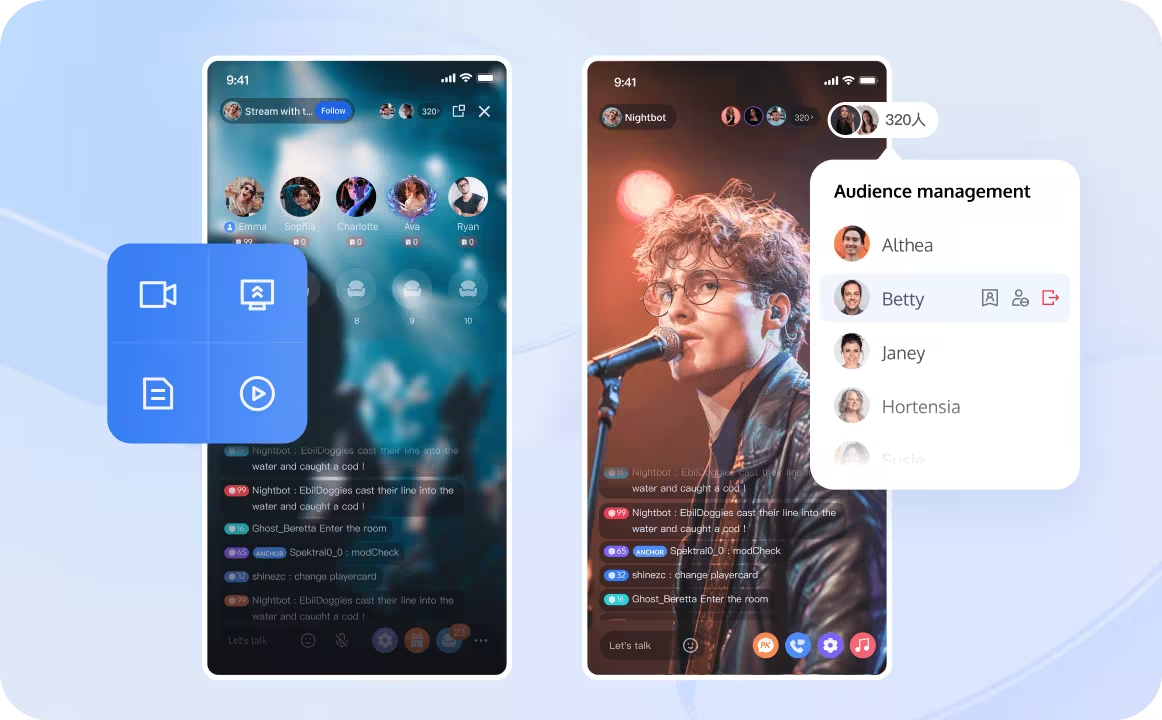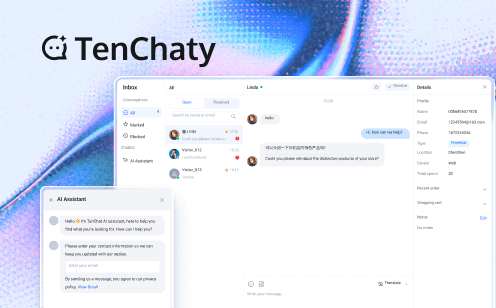In the digital age, real-time streaming has become an indispensable part of our daily lives. In the field of real-time streaming, RTSP technology is undoubtedly a shining star. With its efficient, flexible and scalable features, it has brought us countless amazing streaming experiences. Imagine that you are watching an exciting sports game or chasing the latest TV series, and RTSP technology is the key to silently supporting all of this. It allows us to transmit audio and video content in real time over the Internet at any time and any place, as if we were on the scene.
The charm of RTSP technology lies in its real-time and interactivity. It not only provides high-quality audio and video transmission, but also allows users to perform interactive operations during viewing, such as pause, fast forward, rewind, etc. This interactivity brings us a more personalized and free viewing experience, allowing us to control the content according to our preferences and needs. In addition, RTSP technology also has excellent scalability. It can adapt to different network environments and devices. Whether it is watching high-definition content on a high-speed broadband network or watching videos smoothly on a mobile network, RTSP can provide stable and smooth streaming transmission.
In this blog, we will explore in depth how RTSP technology works, its application scenarios, and its importance to the field of real-time streaming. We will also explore the wide application of RTSP in fields such as online live broadcasting, video surveillance, and distance education, as well as its impact on the future development of streaming technology.

What is RTSP?
RTSP (Real-Time Streaming Protocol) is a network protocol for real-time streaming. Its main purpose is to establish a connection between the client and the server to achieve real-time audio and video transmission. RTSP enables users to access and control streaming content in a real-time and interactive manner by establishing sessions and controlling media streams.
The advantage of the RTSP protocol lies in its flexibility and scalability. It can adapt to different network environments and devices and support a variety of encoding formats and transmission protocols. RTSP can also be used in combination with other related protocols (such as RTP, RTCP) to provide a more complete real-time streaming solution.
RTSP technology has a wide range of applications in the field of real-time streaming. It is widely used in scenarios such as online live broadcasting, video surveillance, and distance education, providing users with high-quality, real-time audio and video transmission experience. At the same time, RTSP also provides developers with rich interfaces and functions, enabling them to build powerful streaming applications and services.
Development History of RTSP
The concept of RTSP originated in 1996 and was jointly proposed by RealNetworks, Netscape and Columbia University. Initially, RTSP was designed to achieve real-time audio and video streaming to meet the needs of streaming applications on the Internet at that time.
With the development of the Internet and the improvement of bandwidth, streaming technology has gradually become the main way for people to obtain audio and video content. As a key protocol, RTSP provides a standardized solution for real-time streaming transmission.
In its development history, RTSP has undergone multiple versions of evolution and improvement. The earliest version was RTSP 1.0, which was released in 1998. Subsequently, RTSP 2.0 was released in 2002, introducing some new features and improvements, such as support for multimedia session control, streaming playback control, etc.
Over time, RTSP has been more and more widely used in the field of real-time streaming. It is widely used in online live broadcast, video surveillance, distance education and other fields, providing users with high-quality, real-time audio and video transmission experience.
At the same time, with the emergence of new technologies and standards, such as HTTP Live Streaming (HLS) and Dynamic Adaptive Streaming over HTTP (DASH), the application of RTSP in some fields has gradually decreased. However, RTSP is still one of the important protocols in real-time streaming media transmission, providing developers and users with rich functions and interfaces.
Basic Principles of RTSP
The basic principle of RTSP (Real-Time Streaming Protocol) is to achieve real-time audio and video transmission by establishing a connection between the client and the server. The following are the basic principles of RTSP technology:
- Establishing a connection: The client establishes a connection with the server through the RTSP protocol. This can be done through a transport protocol such as TCP or UDP. The client sends an RTSP request to the server to request a specific media resource.
- Session description: After receiving the client's request, the server returns a session description (Session Description), which contains information about the media resource, such as media type, encoding format, transport protocol, etc. The client understands the properties of the media resource based on the session description.
- Controlling media streams: The client can send control commands to the server to control the playback of the media stream. These commands can include play, pause, fast forward, rewind, etc. The server controls the transmission and playback of the media stream according to the client's command.
- Real-time transmission: Once the connection is established and the media stream control command is sent successfully, the server starts to transmit real-time audio and video data to the client. This data can be transmitted through RTP (Real-Time Transport Protocol) to ensure real-time and smoothness.
- Interactive operation: The RTSP protocol supports interactive operations between the client and the server. The client can pause, fast forward, rewind, etc. as needed, and the server will adjust the transmission and playback of the media stream accordingly.
Comparison of RTSP and Others
Compared with other similar technologies, RTSP has some unique advantages and characteristics, but also some limitations. The following is a comparison and advantages and disadvantages of RTSP and other similar technologies:
- RTSP vs HTTP: Compared with HTTP, RTSP is a protocol specifically used for real-time streaming transmission, with lower latency and higher real-time performance. RTSP supports interactive operations such as pause, fast forward, rewind, etc., while HTTP is more suitable for the transmission of static content. However, RTSP may face some challenges in traversing firewalls and proxy servers, while HTTP is easier to traverse network boundaries.
- RTSP vs HLS&DASH: Compared with streaming protocols such as HTTP Live Streaming (HLS) and Dynamic Adaptive Streaming over HTTP (DASH), RTSP has lower latency and higher real-time performance. HLS and DASH provide better adaptability and stability by dividing media content into small segments and dynamically adjusting the transmission quality according to network conditions. However, RTSP is superior in real-time and interactivity and is suitable for scenarios that require real-time interactive operations.
Use Scenarios of RTSP
RTSP is is widely used in many different scenarios. Here are some specific examples of use scenarios:
- Video surveillance system: RTSP is often used in video surveillance systems for real-time transmission of video streams from surveillance cameras. Through RTSP, users can view and control surveillance images in real time, such as remote monitoring, video playback, cloud storage, etc.
- Video conferencing and remote collaboration: RTSP can be used in video conferencing and remote collaboration applications, allowing participants to share and watch audio and video content in real time. Through RTSP, users can achieve real-time audio and video transmission, screen sharing, remote control and other functions.
- Live and streaming services: RTSP can be used for live and streaming services, allowing users to watch and interactively operate live content in real time. Through RTSP, users can implement functions such as live streaming, real-time interaction, and real-time comments.
- Interactive education and training: RTSP can be used in interactive education and training applications, enabling students and teachers to communicate and share teaching content in real time. Through RTSP, users can implement real-time audio and video transmission, screen sharing, whiteboard interaction, and other functions.
- Multimedia players and applications: RTSP can be used in multimedia players and applications, enabling users to play and control audio and video content in real time. Through RTSP, users can implement real-time audio and video streaming, fast forward, rewind, pause, and other functions.
The above are some specific examples of RTSP technology usage scenarios, but they are not limited to them. The real-time and interactive nature of RTSP makes it an ideal choice for real-time streaming media transmission, and it plays an important role in application scenarios that require real-time interactive operations and low latency.
Conclusion
The RTSP real-time streaming protocol has an important role and wide application. It provides low latency, real-time interactive operations, flexible scalability, and wide compatibility, making real-time streaming media transmission possible. Due to its importance and advantages, RTSP is widely used in video surveillance systems, video conferencing, live and streaming services, interactive education and training, and other fields. It provides real-time audio and video transmission and interactive operation capabilities for these application scenarios, meeting users' needs for real-time and interactivity.

Today's Tencent Real-Time Communication (TRTC) is a further innovation based on real-time audio and video. It adopts advanced audio and video encoding and decoding technology, intelligent network transmission strategy and anti-packet loss algorithm, and can maintain low latency and high-quality communication experience even in complex network environments. It also supports rich functions such as multi-person real-time audio and video calls, screen sharing, and beauty, and can achieve seamless cross-platform deployment. Its powerful server cluster architecture can support massive concurrent connections to meet the needs of various real-time interactive scenarios such as online education, telemedicine, and video conferencing.
In addition, TRTC provides a complete SDK and API interface, which greatly reduces the development threshold and enables developers to quickly build real-time interactive applications. If you have any questions or need help, our support team is always ready to help you. Please feel free to Contact Us or join us in Telegram and Discord.


